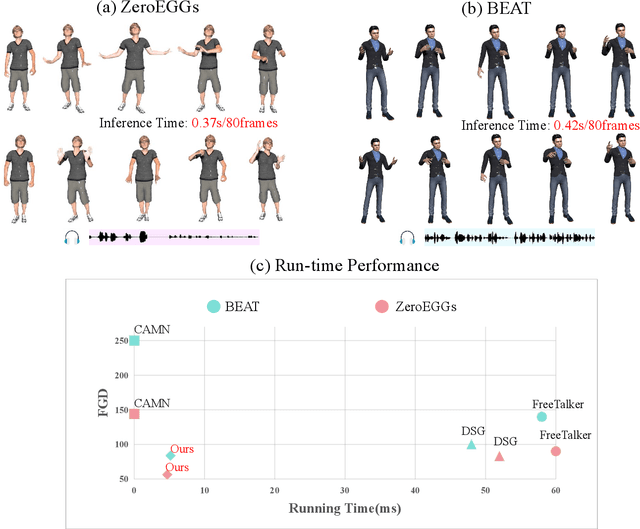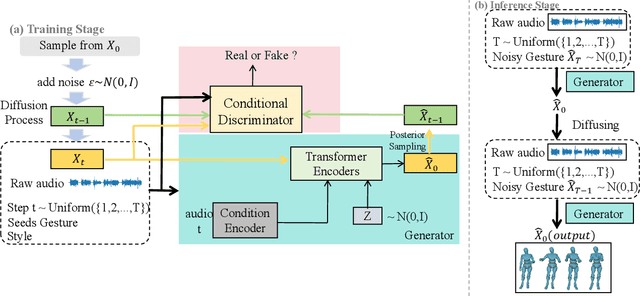Conditional GAN for Enhancing Diffusion Models in Efficient and Authentic Global Gesture Generation from Audios
Paper and Code
Oct 27, 2024



Audio-driven simultaneous gesture generation is vital for human-computer communication, AI games, and film production. While previous research has shown promise, there are still limitations. Methods based on VAEs are accompanied by issues of local jitter and global instability, whereas methods based on diffusion models are hampered by low generation efficiency. This is because the denoising process of DDPM in the latter relies on the assumption that the noise added at each step is sampled from a unimodal distribution, and the noise values are small. DDIM borrows the idea from the Euler method for solving differential equations, disrupts the Markov chain process, and increases the noise step size to reduce the number of denoising steps, thereby accelerating generation. However, simply increasing the step size during the step-by-step denoising process causes the results to gradually deviate from the original data distribution, leading to a significant drop in the quality of the generated actions and the emergence of unnatural artifacts. In this paper, we break the assumptions of DDPM and achieves breakthrough progress in denoising speed and fidelity. Specifically, we introduce a conditional GAN to capture audio control signals and implicitly match the multimodal denoising distribution between the diffusion and denoising steps within the same sampling step, aiming to sample larger noise values and apply fewer denoising steps for high-speed generation.
 Add to Chrome
Add to Chrome Add to Firefox
Add to Firefox Add to Edge
Add to Edge